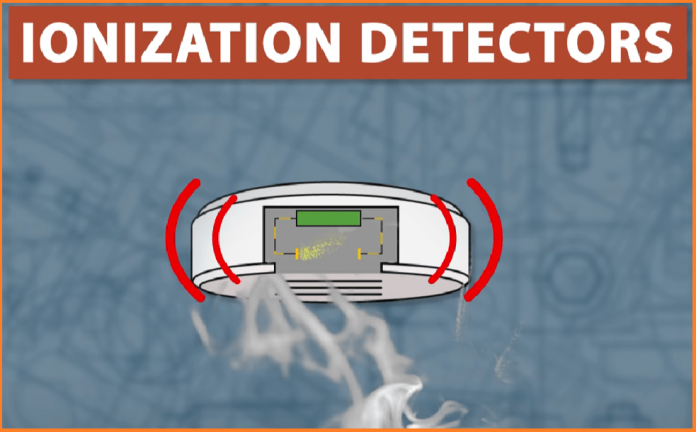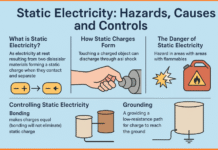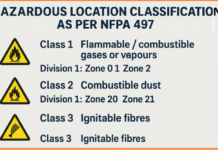In the world of fire safety, ionization smoke detectors stand out as important component in protecting lives and property. These devices play a major role in early fire detection, providing occupants with valuable time to evacuate and emergency responders with an opportunity to contain the blaze. In this article, we will discuss into the workings of ionization smoke detectors, their advantages, and their role in safeguarding.
Contents
The Basics of Ionization Smoke Detectors
Ionization smoke detectors are a type of smoke alarm that operates based on the ionization principle. They consist of a small chamber containing a radioactive material, typically americium-241, and two electrically charged plates. As smoke particles enter the chamber, they disrupt the electrical balance, triggering an alarm. This design makes ionization smoke detectors highly responsive to the small, fast-burning particles produced by flaming fires.
How Ionization Detectors Work
Ionization smoke detectors rely on the ionization process to detect the presence of smoke in the air. The process involves creating a small electric current within the smoke detector chamber. Here’s a step-by-step breakdown of how ionization detectors work:
a. Radioactive Source: The ionization chamber contains a small amount of a radioactive material, usually americium-241. This radioactive material emits alpha particles.
b. Ionization Process: The alpha particles emitted by the radioactive material collide with and ionize the oxygen and nitrogen molecules in the air within the chamber. This ionization process generates positively charged ions and free electrons.
c. Electric Current: The positively charged ions and free electrons create a small electric current within the ionization chamber. This electric current establishes a baseline electrical balance.
d. Smoke Detection: When smoke enters the ionization chamber, it disrupts the normal ionization process. The smoke particles attach themselves to the ions and electrons, reducing the electric current.
e. Alarm Activation: The reduction in electric current triggers the smoke detector’s alarm, alerting occupants to the presence of smoke and potential fire.
Advantages of Ionization Smoke Detectors:
a. Fast Response to Fast-Burning Fires: Ionization detectors excel at detecting fast-burning fires, such as those fueled by paper or flammable liquids. Their sensitivity to small particles allows for a quick response in the early stages of a fire.
b. Cost-Effectiveness: Ionization smoke detectors are generally more affordable than their counterparts, making them an attractive option for user looking to enhance fire safety on a budget.
c. Widespread Use: Ionization detectors are commonly used in residential settings and are often integrated into multi-sensor smoke alarms for comprehensive fire detection.
d. Compatibility with Standard Wiring: These detectors are typically designed to be compatible with standard household wiring, making them easy to install and replace.
Limitations and Considerations:
a. Delayed Response to Smoldering Fires: While ionization detectors are effective in detecting fast-burning fires, they may exhibit a delayed response to smoldering fires, which produce larger smoke particles.
b. False Alarms: Ionization detectors are more prone to false alarms triggered by non-fire sources, such as cooking activities or steam. This can potentially lead to complacency among occupants.
c. Radioactive Material: The use of a radioactive material in ionization detectors raises concerns about environmental impact and proper disposal. However, the amount of radioactive material is minimal and considered safe for normal use.
Complementary Technologies:
Recognizing the limitations of individual smoke detection technologies, manufacturers often integrate multiple sensing technologies into a single smoke alarm. Combining ionization with photoelectric or other detection methods creates multi-sensor smoke alarms that offer broader coverage and increased reliability.
a. Photoelectric Technology: Photoelectric smoke detectors operate on the principle of light scattering. They are particularly effective in detecting smoldering fires, providing a complementary function to ionization detectors.
b. Dual Sensor Alarms: Dual sensor alarms combine both ionization and photoelectric technologies in a single device, offering a comprehensive approach to fire detection. This reduces the chances of missed alarms or false positives.
Best Practices for Installation and Maintenance:
a. Placement: Install ionization smoke detectors in key areas of your place, including bedrooms, hallways, and common areas. Follow manufacturer guidelines for optimal placement to ensure maximum coverage.
b. Regular Testing: Regularly test your ionization smoke detectors to ensure they are functioning correctly. Most detectors come equipped with a test button for easy self-checks.
c. Battery Replacement: Replace the batteries in your smoke detectors at least once a year, or as recommended by the manufacturer. Many detectors also come with low-battery indicators to alert you when replacement is necessary.
d. Cleaning: Keep the ionization chamber free of dust and debris by regularly cleaning your smoke detectors according to the manufacturer’s instructions.
Ionization smoke detectors play a critical role in enhancing fire safety by providing early detection of fast-burning fires. While they have certain limitations, their cost-effectiveness and widespread use make them a valuable component of a comprehensive fire protection strategy. User should be aware of the strengths and weaknesses of ionization detectors and consider complementing them with other sensing technologies for optimal safety. Regular maintenance, proper installation, and understanding the unique characteristics of ionization detectors contribute to creating a safer living environment for all.





